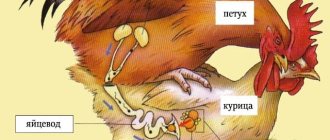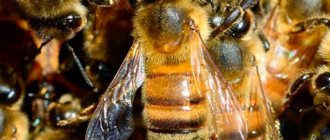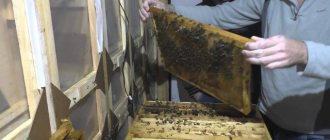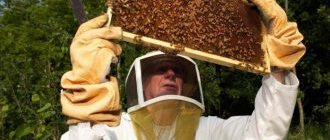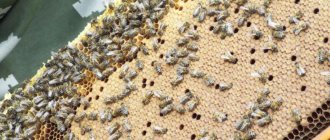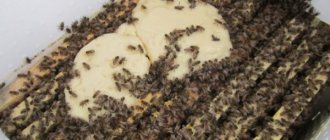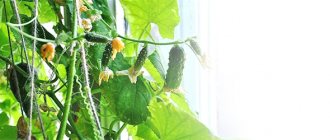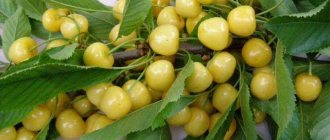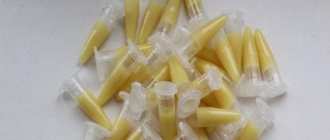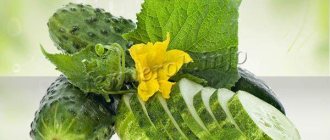What is the role of bees in plant pollination: how to explain?
Bees are highly organized insects. They are great workers and work for the benefit of people. Bee products - honey, propolis, wax, beebread - contain many useful substances. However, bees are valued and loved not only for the fact that they produce tasty and healthy products. The invaluable benefit of bees lies in their ability to pollinate plants.
It is very easy to understand the importance of bees pollinating plants. After all, animals can find a mate and carry out the reproductive task, but plants cannot do this. Therefore, bees and some other insects are the primary helpers in the process of pollination of fruit trees, crops, and flowers.
Important: Pollination is the process of sexual reproduction of plants. Characterized by the transfer of pollen from the stamen to the pistil.
The stamen is the male organ of plants, and the pistil is the female. Upon successful fertilization, a seed is formed. The result is an ovary. This is how we can enjoy fruits and berries; the development and harvest of agricultural crops depends on successful pollination. Without pollination and successful fertilization, it is impossible to get a good harvest.
There are two types of pollination :
- Self-pollination, when plants fertilize themselves;
- Cross pollination occurs when pollen is carried by insects.
Diagram “Types of Pollination”
Bees engage in cross-pollination. Cross pollination has several advantages over self-pollinating plants. The most important advantage is that most plants cannot self-pollinate. And here bees come to the rescue; these small insects quickly transfer pollen from one flower to another.
There is a hypothesis that if bees disappear, then in a few years people will disappear. The absence of bees will lead to the disappearance of plants, fruits, berries, and fruits. This will lead to starvation of animals and humans.
Many scientists are concerned about the phenomenon of the destruction of bee colonies. This trend has been observed in many countries over the past decade. The reasons for the extinction of bees are considered to be the use of pesticides in agriculture, as well as the expansion of cities and the disappearance of wild honey plants. These factors affect the immunity of bee colonies.
Bees need to be protected and cared for. During its short life, a bee pollinates many plants, and people can greatly benefit from this little worker.
Bee collecting pollen
Description of the pollination process
Pollination is possible due to the special structure of the bee's body. The surface of chitin is covered with many electrostatic villi, which serve as a magnet for pollen. The latter sticks to the bee when it lands on a flower to collect nectar. To fill the honey crop, the insect needs to visit not 1, but 80-150 plants. Therefore, the bee flies from one flower to another.
When an insect lands, pollen not only sticks to the villi, but also falls off them. Thus, it falls on the pistil of another flower and begins to germinate. Subsequently, the pollen grain ends up in the ovary.
After this, the fertilization process is considered complete. As a result, the plant produces a harvest. One bee pollinates more than 1,500 flowers per day.
Where do bees collect pollen?
There is no special sac on the insect’s body for collecting pollen. Therefore, they collect pollen with their whole body, or more precisely, with its villi. Plant pollen collected by the bee is stored in a basket on its hind legs. The result is a ball that has different shades depending on the honey plant: from yellow to black. Field bees spend up to two hours of their time per day collecting pollen.
Important! When a bee flies into the hive after flying around flowers, she carries a weight equal to her own.
Only bad weather can stop the collection of pollen and nectar. At this time, pollinators are in the hives.
Pollen collection
The pollen collection process itself consists of several stages:
- The bee, with the help of a scout, looks for fragrant and attractive honey plants.
- Sitting on the selected flower, the insect collects pollen on all the fibers.
- The product is collected on the legs, body, and wings.
- The insect carefully combs its paws, collecting prey from all the fibers.
- Then he forms a ball and lowers it into the basket on the shins of his hind legs.
Stages of Bee Development
To create one ball you need to fly around a thousand flowers. Then the toiler flies to the hive with her prey. Here she drops pollen into the cells. This happens with the help of special spurs, which are located on the middle legs. Next, the pollen is processed.
Disposal and recycling of pollen
After dumping pollen into cells that are located closer to the brood, the bees begin processing it. This is the work of insects that do not fly out of the hive. Young insects process pollen.
- Loosen lumps of pollen with their jaws.
- Moistened with nectar and saliva of the glands.
- Compact with heads.
- Pour honey over the fermented pollen.
- Seal with wax.
In this form, the pollen is stored for six months or even more. When pollen is densely packed, lactic acid fermentation processes take place in it. Lactic acid, which is produced as a result of this process, is a natural preservative and protects bee bread from spoilage.
All spring and summer, pollinators collect and store pollen so that there is enough food for a safe winter and for feeding the brood. If less than 18 kg of pollen is collected in a year, the bee colony will be on the verge of death and may not survive the winter.
How bees transfer pollen from flower to flower
In order to collect 20 mg of pollen, an insect flies around a thousand honey plants. At the same time, bees pollinate flowers. Pollen is male reproductive cells. If the plants are monoecious, then male cells must be transported to female flowers for fertilization to occur.
When collecting nectar and pollen, the insect flies from flower to flower. Some of the collected pollen from the insect's villi remains in the flower. This is how bees pollinate plants. Thus, insects play a huge role in the reproduction of honey plants. Most wild and cultivated plants require pollination by bees.
What do bees pollinate?
Among honey plants there are hundreds of different flowers, shrubs and trees. Bees pollinate:
- many shrubs: hawthorn, currant, raspberry, wild rosemary, heather, barberry, gooseberry;
- fruit and ordinary trees: apricot, apple, pear, acacia, cherry, oak, chestnut, maple, bird cherry, birch, plum, linden;
- herbaceous plants: clover, watermelon, cornflower, coltsfoot, thyme, lungwort, basil, alfalfa, fireweed.
Many vegetables in gardens and greenhouses are also pollinated by insects. These include: cucumbers, onions, pumpkin, some varieties of tomatoes, peppers and eggplants.
Important! Scout bees select honey plants based on color and the sugar content in the nectar.
How to Attract Bees to a Greenhouse for Pollination
Attracting bees to the greenhouse is important if there are crops there that need cross-pollination. There are several tips to attract bees to your greenhouse:
- plant flowers in a greenhouse;
- provide unimpeded access for bees to collect pollen;
- place an apiary not far from the greenhouse;
- use various baits;
- completely neutralize foreign odors.
You can attract bees to a greenhouse using a whole range of such measures. First of all, it is important that insects have access to the inside of the greenhouse. To do this, the greenhouse is equipped with the maximum number of doors and vents, which are opened in hot weather suitable for pollination.
It is also recommended to plant sunflower, jasmine or petunias in the greenhouse as attractive plants.
It’s great if there is an apiary next to the greenhouse.
Attention! When the apiary is moved 100 m away, the greenhouse attendance drops by almost 4%!
The following substances are used as bait:
- sugar syrup with the aroma of the necessary flowers, in which case pollinators will fly precisely to this smell;
- make feeders for bees with sugar syrup and move them to the greenhouse;
- use aromatic oils to attract insects: mint or anise.
Advantages and disadvantages of the gray mountain Caucasian bee breed
When using feeders, it is not necessary to keep them in the greenhouse all the time; you can take them out for a while. But it is not recommended to place feeders further than 700 m from the greenhouse.
How to attract bees to cucumbers
Attracting bees to pollinate cucumbers is not difficult. The vegetable can grow both in a greenhouse and in open ground. You can attract bees to the greenhouse to collect nectar if you spray all the cucumbers with a special solution. The recipe is simple:
Mix 1 liter of water at room temperature with a large spoon of jam or honey. Add 0.1 g of boric acid. After spraying, the bees will fly to the scent and pollinate the cucumbers in the home greenhouse.
In early spring, you can place a bee colony in a greenhouse with cucumbers. To do this, it is necessary to place the hive on the side rail of the greenhouse at a height of 40 cm. In a glass greenhouse, it is recommended to darken the windows behind the hive using fabric or a sheet of cardboard or plywood.
Features of the body structure of a pollinating bee
There are differences from other relatives, for example, wasps. The bee is more rounded (the wasp is longer and thinner). The bright color, of course, is similar - a warning to enemies. If you look at a bee through a magnifying glass, you can see that the entire body is covered with small fibers. This fluffiness is a natural shield from weather changes, injuries and enemies. The longer and denser the hairs, the greater the likelihood of pollen accumulation and the wider the pollination area. Moving with its paws, the bee “combs” pollen into baskets - depressions that are located on the outer side of the shin of the paws of the last (third) pair.
The importance of bees in pollination
The role of insects in pollination cannot be underestimated, because they are pollinators of 90%! of (MISSING) all crops in the world. Thanks to cross-pollination of plants, their productivity and vitality increase, and an increase in the number of green spaces, in turn, has a positive effect on the state of the atmosphere.
In agriculture, income from the sale of crops pollinated by insects is 10 times higher than the income of beekeepers from the sale of honey and wax products.
Pollination helps increase plant productivity:
- buckwheat - by 50%!;(MISSING)
- sunflower - by 70%!;(MISSING)
- clover - up to 300%!
The role of bees in pollination is that they are the first to appear on flowers after winter, while other insects are just reproducing or waking up from hibernation.
Did you know? A bee can smell flowers at a distance of about 1 km.
Pollination of grapes
Many grape varieties are adapted to pollination by wind, but there are also those where the participation of bees is indispensable. For example, according to research, the yield of the Nimrang grape variety when pollinated by insects increased by 50%, and the Saperavi variety by 40%.
In general, the flowers of this plant produce weak nectar, therefore, as a rule, in nature, bees ignore them and do not pollinate them. For the purposeful pollination of rare grape varieties, agricultural technicians use flavored fertilizer and a method for removing bee bread reserves from the hives. In such cases, the effect of pollination by bees increases.
How do bees pollinate plants?
Plants and insect pollinators are in close contact with each other. Most of them are large gourmets that prefer nectar. In order to gain access to nectar, the bee needs to touch the anthers or stigma, which are located on the way to it. When flying from flower to flower in search of food or shelter, each insect plays the invaluable role of plant pollinator.
Plants in which insects participate in pollination are perfectly prepared to meet their intermediaries. Their flowers are brightly colored, which immediately catches the eye of bees and bumblebees. Usually the petals are colored, and in rare cases the calyxes (in heather, etc.) or calyxes and corollas (in tulips, larkspur). Often small flowers are combined into an inflorescence, after which they will be visible to pollinators (for example, the inflorescences of sunflower, chamomile, popovka, various umbelliferae).
Entomophilous flowers can have a variety of colors - from purple to violet. The role of coloring is very important. Coloring helps insects find the plant they need. Flowers that are pollinated by moths are always white.
All of the above indicates that without pollinating bees, the diversity of plants that pleases the eye of any person would not exist on Earth. Therefore, the loss of these insects entails the loss of more than just honey. We will lose pears, apples and a lot of other crops. Pollinators even provide milk for our breakfast, as cattle feed on alfalfa and clover, which are pollinated by these little workers. In the summer you will have to do without watermelons, and during Halloween without pumpkins. The apocalyptic scenario leaves no room for all this everyday and ordinary fairy tale.
However, without bees, humanity will not starve to death. But without their work, we will lose many plants, limiting ourselves to wind-pollinated crops such as wheat and rice. Our survival would then depend on the direction and strength of the wind.
Principles of training bees for pollination
The domestication of bees began in the ancient world and became widespread. It is known that the homeland of these insects is Southeast Asia.
The purpose of training is to develop a conditioned reflex to the aroma of a certain culture. There are several types of training:
- feeding the bees with sugar syrup with the aroma of the desired plant;
- placement of shields painted in easily distinguishable colors (blue, yellow);
- bait sowing of plants.
The supply of honey in the hive, which is many times greater than the needs of the bees, does not in any way reduce their activity. A strong bee colony collects 5–6 kg of honey per day. Such a harvest requires visits from eight to twenty million flowering plants.
Thus, among the class of insects - pollinators, bees occupy the top of the hit parade.
Which flowers cannot be pollinated by bees?
Important: Attracting bees to the land can be a real problem for the farmer. There are plants that bees practically do not pay attention to. These plants include clover, as well as flax and alfalfa.
But people have found ways to attract bees to clover. For this use:
- Blue and yellow bait shields near clover growing areas.
- The bees are fed with sugar syrup.
Varicose veins: treatment with bees
First, a feeder with sugar syrup is placed near the apiary. Then, when the bees have eaten, feeders with sugar syrup are placed near the clover. In this case, there is no need to place food in the hive; the bees will fly to the clover feeders.
Bees don't land on red clover, they don't see red. Therefore, you can use a bait crop in the form of pink clover, which is a good honey plant. The two varieties are sown next to each other. This is how bees visit red clover.
In winter, some beekeepers allow bees into greenhouses to pollinate the crops growing there. But artificial pollination is more often used. Chemicals used to grow crops in greenhouses can cause great harm to the bee colony.
Bee on a clover flower
Bees love the following types of plants :
- Fruit trees: apple, plum, pear, raspberry, apricot, strawberry, strawberry, cherry.
- Vegetables and melons: watermelons, melons, cucumbers, pumpkins.
- Forage and oilseeds: buckwheat, rapeseed, sunflower, white mustard.
- Flowers, herbs: jasmine, lavender, acacia, phacelia, lemon balm, petunia, hyacinth, etc.
Important: If you want to attract bees to your site, take care of planting favorable plants on your site.
What plants do bees love?
The mechanism for attracting bees is as follows:
- Plants must have a strong aroma; bees can smell it.
- Flowers should be colorful. Bees love blue, white, yellow, and orange flowers the most. Bees do not see red flowers and practically do not land on them.
- Flowers with a simple structure have a better chance of pollination. It is easier for bees to get to the nectar. Bees are smart insects; they will not want to waste their time and energy extracting nectar from flowers with a complex structure if there are simple ones nearby.
- It is worth taking care of continuous flowering in the area. This way, the bees will always have a source of food, and the gardener will always have good harvests.
The biological role of bees in nature is very important. More than a third of the world's crop production depends on the activity of bees. People should value and protect bees with all their might.
Pollination of the garden
Insects visiting the flowers of fruit trees and grapes gives very good results in obtaining a fruit harvest. In this case, as a rule, the highest yield can be obtained with cross-varietal pollination, that is, when bees visit several types of trees at once. In such cases, after a visit by bees, the ovary is formed in more than 30-50% of all flowers. For comparison, under normal conditions without the participation of insects, this figure is 5-6%! (MISSING)And this is a fact, because most varieties of fruit trees, such as apple trees, cherries, and plums, are practically self-sterile and require only cross-pollination.
Features of garden pollination
In order to get a good fruit harvest, you should remember and take into account several important points.
- Firstly, during the flowering period of fruit and berry trees there is often “non-flying” weather, so it is important that the apiary is located as close to the garden as possible, or even better, just in it.
- Secondly, for every 25 hectares of garden you need to count 50-60 families. If the area is less than 25 hectares, then the apiary is placed in the center of the site.
- Thirdly, it is important to know that bees visit the flowers of fruit trees best in the first days of their location in the garden. Then many families of insects can disperse throughout the surrounding area. That is why in gardens one apiary should be placed for 3-4 days, then this one should be taken away and a new one should be brought in.
What do bees collect: nectar or pollen?
Bees collect both nectar and pollen. But the purpose of such production is different. The nectar is collected in a special bag under the abdomen and used as food for the bee itself. Nectar is found in all flowering plants. Bees dip their tongue there, which is rolled into a tube and located in the proboscis, and collects nectar. One bag can hold up to 70 mg of the substance. When the worker returns to the hive, the product receivers suck the prey from her crop. Honey is obtained from nectar in a special way after a long process. Honey plant pollen is collected using a different technology.
Features of flower pollination
The most favorite flowers for bees are flowers of bright colors. For insects, this is a signal for the placement of nectar. Be sure to have a lot of purple, pink, orange and yellow flowers growing in the garden and near the apiary. These are not only chic garden decorations, but also wonderful honey plants.
Bees love flowers such as:
- Sunflower
- Chrysanthemum
- Snapdragon
- Begonia
- Gerbera
- Azalea
- Lavender
- Verbena
- Sage
- Petunia
It is also recommended to plant such fragrant flowers as daffodil, geranium, jasmine, and hyacinth. Bees neglect plants with red flowers and those that have no scent. These flowers are pollinated by butterflies.
In the table below you can see the basic principles of pollination of flowers and herbs by bees.
| Valerian officinalis | Pollinated during flowering period (July - early August) |
| Medicinal burnet | Pollinates in August. Honey obtained from the nectar of this plant is distinguished by its bactericidal properties. |
| Phacelia | One of the favorite plants of bees. From one hectare of this plant you can get up to 500 kg of honey. |
| Siberian buzulnik | This plant is actively used by bees for pollination and nectar. |
| Oregano and lemon balm | Attracts bees due to its specific smell |
| Medicinal black root | Often this plant is pollinated only by wild bees |
| borage | This plant begins to bloom in summer and is pollinated by insects even in the rains. |
| Khlopatnik | Because The flowering period of this plant is short; it is important that it is pollinated. The greatest amount of nectar is released in cloudy weather. |
If it were not for bees, the planet would not have the diversity of plants and flowers that constantly delights our eyes. That is why the loss of such insects will not only lead to the loss of honey, we will lose harvests of crops such as grapes, apples, pears and many others.
How to attract pollinators to your site
To attract pollinators to your site, you need to:
- Plant flowers in the garden that are typical for the region, because bees land mainly on those plants that are familiar to them.
- Plant flowers that differ in color, height and shape. The brighter and more unusual the crops in the flower garden, the more honey bees will be attracted.
- The flower garden in the garden should bloom all the time, so plant varieties should be carefully selected to ensure continuous flowering during the period of bee activity from April to September.
- Attract pollinating insects using sugar syrup, which is poured into small containers and placed in the garden.
The honey bee is a unique insect that is one of the main pollinators on the planet, benefiting not only humans, but also plants.
What plants do bees like to pollinate?
Insects prefer those flowers and plants that have a pronounced pleasant aroma and bright petals. Convenience of pollination is also important: large inflorescences attract more attention.
Bees pollinate the following plants most often:
- apple trees;
- apricot trees;
- tomatoes;
- cucumbers;
- peppers;
- zucchini;
- melons;
- chamomile;
- roses;
- poppies;
- marigold.
Insects are not attracted to calendula, henbane and lemon balm. This is due to a too strong, repulsive odor or, on the contrary, its complete absence.
